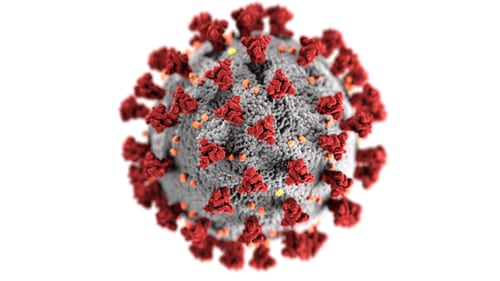Extension of COVID-19 on Chest CT, Implications for Chest Radiograph Interpretation

The study included 20 pairs of CT scans and same-day chest radiographs, along with 20 chest radiographs of controls. All pulmonary opacities were semi-automatically segmented on CT images, producing an anteroposterior projection image to match the corresponding frontal chest radiograph. Eight thoracic radiologists reviewed the 40 radiographs, and a receiver operating characteristics curve analysis was performed for the detection of lung opacities. Logistic regression analysis was done to identify factors affecting opacity visibility on chest radiographs.
The authors concluded that QCTmass varied among COVID-19 patients. Chest radiographs had high specificity for detecting lung opacities in COVID-19, but a low sensitivity. QCTmass and combined opacity volume were significant determinants of opacity visibility on radiographs.
Findings indicated that quantitative opacity mass and 3D opacity volume on CT were quantifiable metrics affecting the visibility of COVID-19-related opacities on chest radiographs.
“Chest radiographs had low sensitivity and high specificity for detecting COVID-19-related lung opacities. The QCTmass and 3D opacity volume on CT, which are quantitative surrogates of disease extension, were significant determinants of opacity visibility on radiographs," wrote the authors. "It is crucial to properly understand the diagnostic accuracy and limitations of chest radiographs in COVID-19 to improve the quality of patient management by ensuring an appropriate balance between the practicality of chest radiography versus better diagnostic performance of CT scans.”
The study can be found at https://doi.org/10.1148/ryct.2020200107.
REFERENCE
- Choi H, Qi X, Yoon SH, et al. Extension of coronavirus disease 2019 (COVID-19) on chest CT and implications for chest radiograph interpretation. Radiol Cardiothorac Imag. 2020;2(2).
Citation
Extension of COVID-19 on Chest CT, Implications for Chest Radiograph Interpretation. Appl Radiol.
April 3, 2020